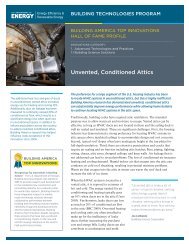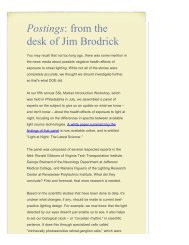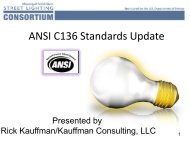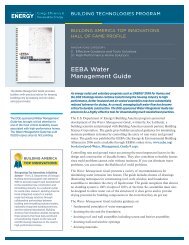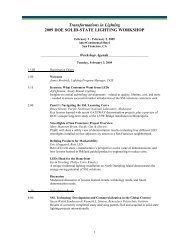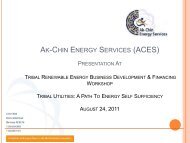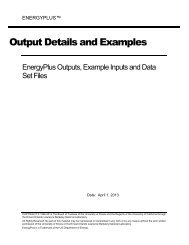EnergyPlus Interface Developer's Guide - EERE - U.S. Department ...
EnergyPlus Interface Developer's Guide - EERE - U.S. Department ...
EnergyPlus Interface Developer's Guide - EERE - U.S. Department ...
You also want an ePaper? Increase the reach of your titles
YUMPU automatically turns print PDFs into web optimized ePapers that Google loves.
Input Overview General Input Rules<br />
Input Overview<br />
The general structure of the input files for <strong>EnergyPlus</strong> is plain text. Fields are comma<br />
delimited and each “line” is terminated with a semicolon. This allows for a very rudimentary<br />
input processor that can be instantly flexible to developer’s needs. However, it puts more<br />
burdens on the <strong>EnergyPlus</strong> developers to process the input information, supply defaults as<br />
needed, and perform validity checks. <strong>Guide</strong>lines were established for the input:<br />
Input will be a flat ASCII file with comma-delimited columns and each “line” (where each<br />
line can run over several physical file records) terminated with a semicolon.<br />
Input should be “readable”, “editable”, “simply parsed with few value checks or<br />
consistency checks”.<br />
Input, to the extent possible, should be easily maintainable and extendable.<br />
Input will be “object based”.<br />
Definitions in a data dictionary will define the input. The data dictionary should be selfdocumenting.<br />
All input units will be metric (SI). Conversions from “user units” will be done in the<br />
interface agents.<br />
Two input files are necessary for the input processing. The first is the “data dictionary” which<br />
will specify the requirements for each item. The <strong>EnergyPlus</strong> Input Processor uses these<br />
requirements to process the “input data file” and report any anomalies found. Both input files<br />
have similar structures: 1) Sections – single lines/commands, which may help group the<br />
simulation input for readability and 2) Classes/Objects – data attributes for the simulation.<br />
Classes are the term used in the data dictionary – each class will specify the kind of data<br />
(alpha or numeric) that will be included in the simulation input. Objects are instances of these<br />
classes and appear in the IDF with appropriate data.<br />
General Input Rules<br />
The following rules apply to both the Input Data Dictionary and the Input Data File.<br />
The initial line of a definition or input MUST have a comma or semicolon.<br />
Fields do not extend over line boundaries. Usually, if a comma or (as appropriate) semicolon<br />
is not the last field value on a line, one will be inserted. Of course, several fields<br />
may appear on a single line as long as they are comma separated.<br />
Commas delimit fields – therefore, no fields can have embedded commas. No error will<br />
occur but you won't get what you want.<br />
Blank lines are allowed.<br />
The comment character is a exclamation “!”. Anything on a line after the exclamation is<br />
ignored.<br />
A special type of comment using the character combination: “!-“ in the input file is a<br />
special form of comment that is followed by the field name(s) and units and should not<br />
include user provided text. This form is used to indicate automatic comments which may<br />
be written by interfaces and other utilities as an endline comment after a field value.<br />
Input records can be up to 500 characters in length. If you go over that, no error will<br />
occur but you won't get what you want.<br />
Each Section and Class/Object keyword can be up to 100 characters in length.<br />
Embedded spaces are allowed, but are significant (if you have 2 spaces in the section<br />
keyword – you must have 2 when you write the object keyword).<br />
Each Alpha string (including Section and Class/Object keywords) is mapped to UPPER<br />
case during processing, unless the “retaincase” flag marks the field in the IDD. Get<br />
routines from the <strong>EnergyPlus</strong> code that use the Section and Object keywords<br />
4/1/13 5





